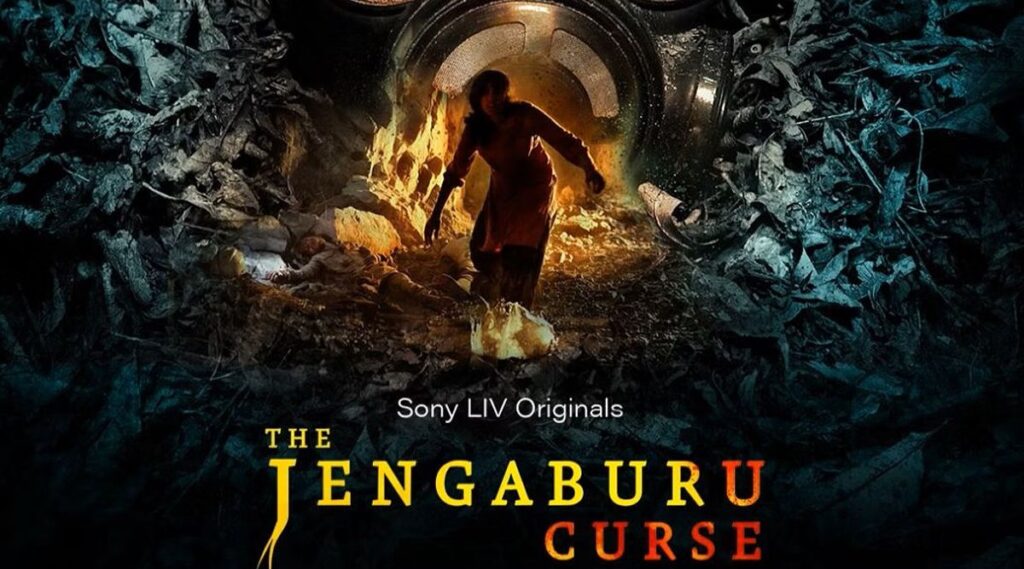Dr Khusi Pattanayak
The Jengaburu Curse (Hindi, 2023) is a significant contribution to the social justice narrative but not remarkable enough to be registered in the annals of cinema.

Marketed as India’s first cli-fi (climate fiction or climate change fiction) the 7-episode OTT series intertwines mythology and contemporary greed to spin a tale survival, identity, and justice.

The Jengaburu Curse is grand both in terms of its scale and the scope of narrative. The sudden violent displacement of a certain Bondia tribe (a reference to Bonda tribe, considered to be one of the earliest tribal communities in India) from interiors of Odisha, goes unnoticed within the state and the country; but changes the course of global power structure and economy.
From United Kingdom to North Korea to Malaysia to Kenya and Uganda the tentacles of change take the globe under its grip.
Anyone who is familiar with Panda’s craft knows about his ability to project children and social issues in the most fascinating manner. The Jengaburu Curse is no different – from Priya’s childhood memories in jungle to Gotipua trainees in Raghunathpur there is a certain enticing charm to the shots that has kids in them.
It was heartwarming to see a mainstream release being shot exclusively in Odisha (‘India’s Best Kept Secret’). Paulo Perez’s cinematography does justice to pristine, unexplored lands that is at the heart of the Jengaburu chronicle. Wish more and more filmmakers and producers explored the ‘Scenic Serene Sublime’ beauty of Odisha.
Mukesh Chhabra is a winner again with his impeccable casting. Apart from a gripe here or there, every actor fits into their role like a perfect jigsaw puzzle. Music by Alokananda Dasgupta (Sacred Games, AK vs AK) is not just soulful but gives life to pathos.
That said, The Jengaburu Curse is cursed by its own ambitious world. The series has too many twists and too many subplots which does not assimilate well. The ending is rushed. The mythology and game of science do not create the right combustion. A single (wo)man’s fight against the system (it is always one vs everyone!) should have had some more memorable dramatic moments, this had none. And with so many distractions in the screenplay one does not feel as if the makers were planning for anything too subtle either.
Some of the accents were horribly off and the series required a better continuity in terms of editing. I find it amusing as well as annoying that every time someone is shown challenging the system, the individual(s) always has a JNU connection. Is it a compliment for JNU or are we on the brink of stereotyping the academic institute? Mind you, not all JNU-ites are rebels, some are sycophants too!
The other glaring concern that the series raises was the lack of engagement with the Bondia community. They are projected as a bunch of pre-industrial group who move in herd from one place to another and struggle to survive in the modern world. They are devoid of history, socio-political context, or cultural identity. They remain secondary in their existential battle. The series, despite its noble intentions, further exoticizes and marginalises the voiceless.
By the way, the word Naxal in The Jengaburu Curse is not always true to its lexical meaning, it is a floating term that has been used to identify anyone who is anti-establishment. The usage did not bother me, but might not make everyone comfortable.
The finale shows the centre acts immediately on being informed about the national security issue (in just about few hours); while the malpractice was continuing for 3 long years in the state, without raising any suspicion. Given the political wave in the country, I am wondering if Panda was trying to make any subtle point there.
The first episode has someone watering a tiny plant with mineral water and the end episode has a shot where a tiny plant is watered with dripping blood. A symbolic representation that a just activism cannot be continued from the luxury of the AC cabins, they demand more.
The Jengaburu Curse is a good effort in the right direction, do watch it this week. It is streaming free on SonyLiv and is available in multiple Indian languages (including Odia).
(The author is an internationally published writer & corporate communication specialist. Views are personal)




























